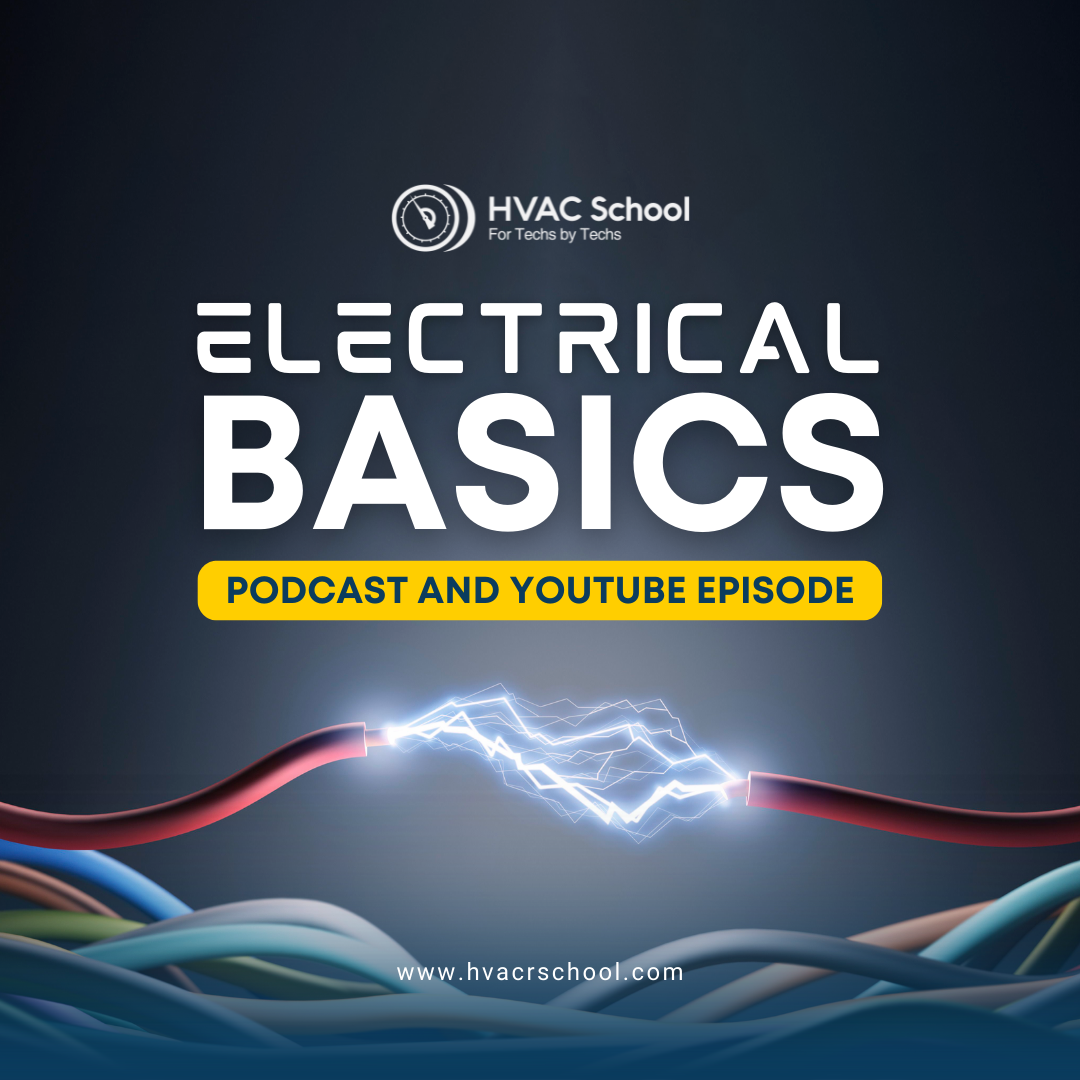Electrical Basics

This podcast is Bryan’s full-length electrical basics class for the Kalos technicians. He covers electrical theory and circuit basics.
Volts, resistance, and amps all affect the behavior of electricity in circuits. These are also critical factors in electrical safety. Watts and kilowatts come from the multiplication of the volts and amps, though not every volt-amp does work; the power factor indicates how much work the volt-amps are actually doing. Some of the volt-amps are reactive (kVAR) and don’t do the real power of watts.
Electrons move by interacting with other atoms. Substances can be conductors or insulators, and conductors have very few valence electrons, which move in and out of other atoms easily. Insulators have many valence electrons and are more stable. Insulators have high resistance, and conductors tend to have low resistance.
Circuits consist of loads, switches, and power supplies. Loads actually do things and consist of light bulbs and motors. Switches pass power and don’t do work. Power supplies can be finite, like batteries, but also include transformers that take power from the utility company. Open circuits don’t move electricity, but closed circuits create a complete path that allows electrons to move. Electricity takes all available paths, not just the path of least resistance.
Bryan also covers:
- Electricity and the body
- GFCIs and AFCIs
- Shock and arc flash protection
- Lockout/tagout
- Electricity and fall hazards
- Energy transfer
- Resistive vs. inductive loads
- Magnetism and flux
- Direct current (DC) vs. alternating current (AC)
- How power companies and generators work
- Open vs. short circuits
- “Path of least resistance”
- Tripping breakers
- Electrical units of measurement
- Step-up and step-down transformers
- Electrical frequency (hertz)
- Variable frequency drives (VFDs)
- Microfarads and capacitors
- Parallel and series circuits
- Becoming more proficient at reading diagrams
If you have an iPhone, subscribe to the podcast HERE, and if you have an Android phone, subscribe HERE.
Check out our handy calculators HERE.








Comments
To leave a comment, you need to log in.
Log In